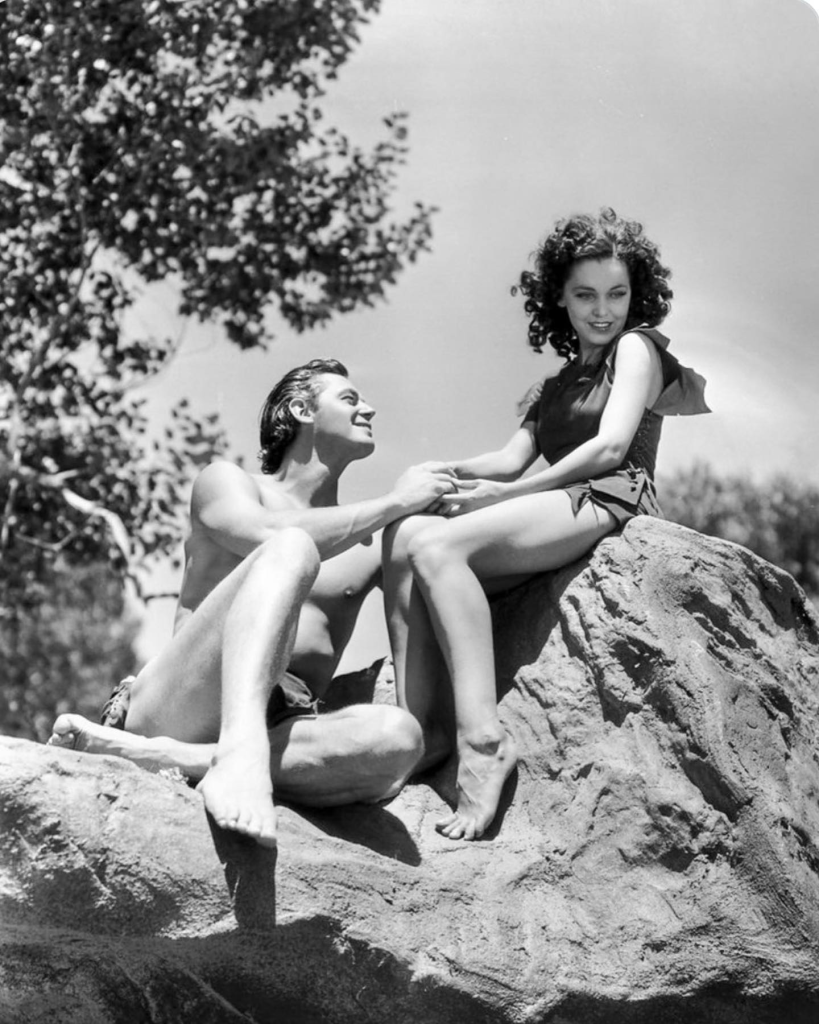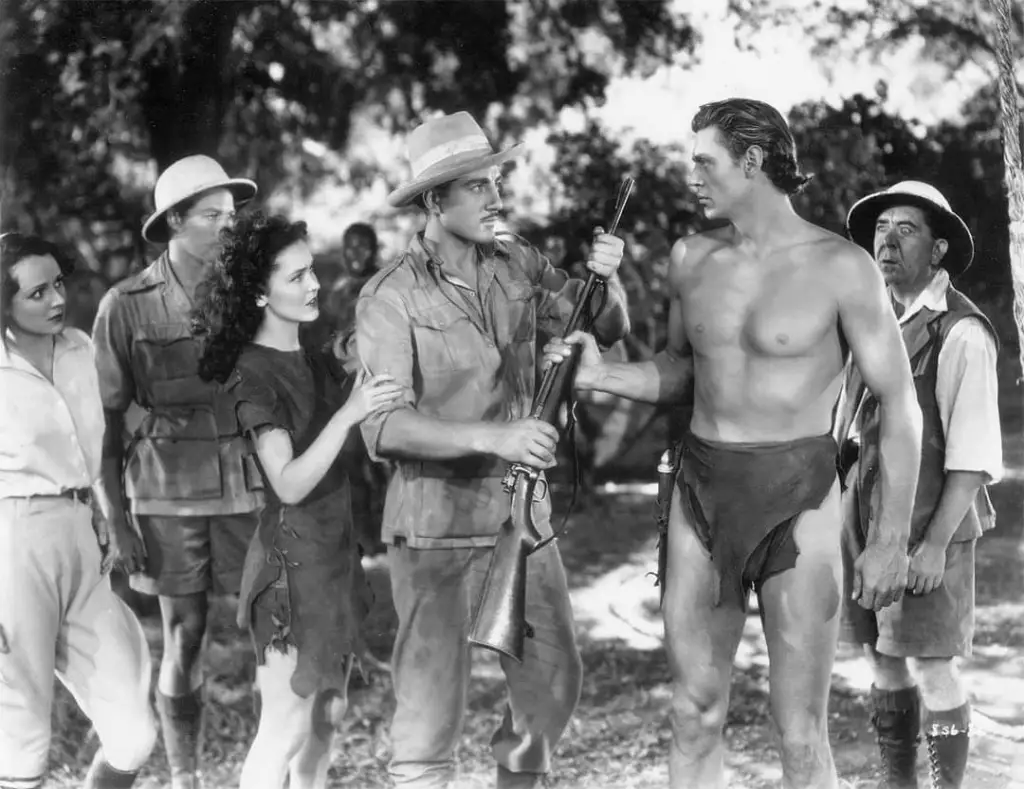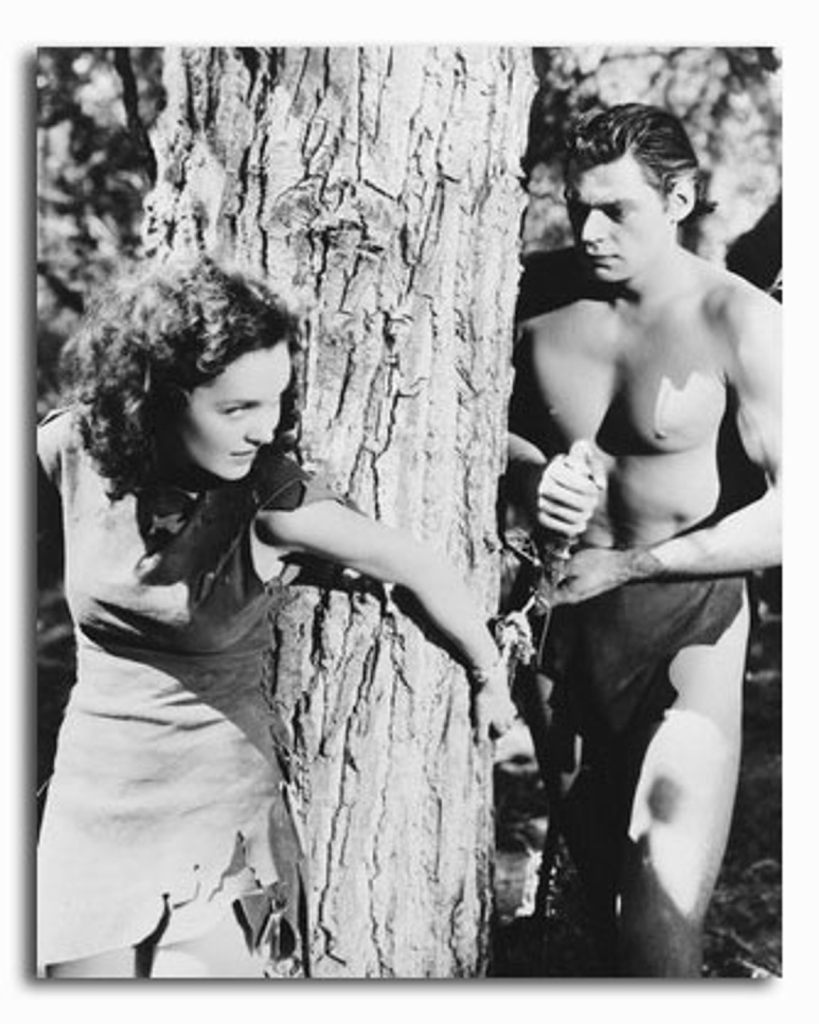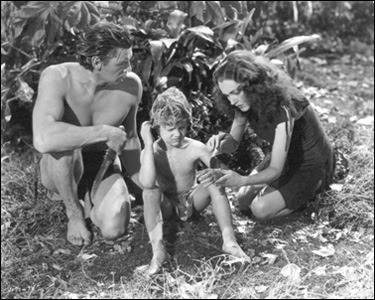Back in 1936, Tarzan Escapes was supposed to be just another exciting chapter in the booming Tarzan film franchise. But what unfolded behind the scenes was anything but ordinary. In fact, the original version of the film was so dark, so disturbing, that MGM executives completely rejected it. We’re talking scenes of Tarzan being whipped, eerie underground monsters, and nightmarish jungle sequences that left test audiences stunned—and not in a good way.
So, what did MGM do? They didn’t just cut a few minutes here and there. They reshot almost 70% of the entire film, rewrote the ending, and brought in a new creative team to clean up the chaos.

Three Directors, One Wild Production
Most films struggle with too many writers. Tarzan Escapes? It struggled with too many directors. The project was originally helmed by James C. McKay, but when things got too intense, MGM passed the torch to John Farrow, and eventually handed the final reins to Richard Thorpe. Each brought a different vision to the table—some darker, some lighter, and some just plain confused.
This back-and-forth left the production in a state of creative limbo, which is rare for films from the 1930s, where tight studio control usually kept things streamlined. But Tarzan Escapes? It was a beast the studio couldn’t tame
Video: Clip | Tarzan Escapes | Warner Archive
Tarzan… or Jungle Monster?
If the original version had hit theaters, it would’ve painted Tarzan in a way fans had never seen before. Early cuts of the film turned Johnny Weissmuller’s beloved jungle man into a near-monster—more beast than hero. Instead of being the noble, vine-swinging protector of the jungle, he was dark, almost feral, with an eerie presence that unsettled audiences.
And that’s exactly why the studio panicked. This wasn’t the Tarzan people knew. It wasn’t the jungle fantasy they wanted to escape into on a Saturday afternoon. It was something much grimmer—and it had to go.
What’s in a Name? Apparently, Everything

Even the title couldn’t escape the chopping block. The film was originally called “The Capture of Tarzan”, which directly reflected the plot. But the studio felt it sounded too clinical. Too boring. It lacked punch.
So they changed it to “Tarzan Escapes”—a title full of energy, mystery, and movement. It flipped the focus from victimhood to action, from capture to freedom. And in the world of Hollywood marketing, that single shift made all the difference.
Maureen O’Sullivan Almost Said Goodbye
Video: Tarzan Escapes (1936) – 3-Jane is Leaving
Actress Maureen O’Sullivan, who played Jane, was close to walking away from the role entirely during the making of Tarzan Escapes. After two films and the intense pressure of working on such a chaotic production, she was burned out. The long hours, the repetitive scripts, and the danger of working in unpredictable environments took a toll.
She wanted out. But MGM wasn’t ready to lose her. They convinced her to stay on for a few more films, sweetening the deal with better contracts and creative promises. It worked—for a while. But her desire to leave was another sign of how difficult this movie had become behind the scenes.
The Monkeys Weren’t Exactly Team Players
Shooting jungle scenes is never easy, but in Tarzan Escapes, the cast and crew were constantly battling the unpredictable behavior of their live animal co-stars. Johnny Weissmuller recalled one particularly hairy moment—literally—when a monkey latched onto his head and refused to let go, pulling his hair and throwing a tantrum in the middle of a take.

And back then? There were no CGI tricks or animal safety protocols. It was just actors, cameras, and whatever nature threw at them.
Box Office Triumph Despite the Turmoil
Here’s the craziest part: despite all the chaos, reshoots, and director swaps, Tarzan Escapes turned out to be a massive box office success. Audiences didn’t know (or care) about what had gone wrong behind the curtain. All they saw was another thrilling jungle adventure starring their favorite vine-swinging hero.
And in doing so, the film solidified Johnny Weissmuller’s legacy as the definitive Tarzan for a generation. His stoic strength, athleticism, and charisma made him a Hollywood icon—and made the Tarzan brand nearly bulletproof for years to come.
Conclusion: A Messy Masterpiece Hidden in the Jungle

Tarzan Escapes isn’t just another old-school jungle flick—it’s a cinematic time capsule full of wild production twists, creative overhauls, and behind-the-scenes drama that would make today’s tabloids drool. From nearly turning Tarzan into a monster to monkeys attacking the lead actor, it’s a wonder this film even made it to theaters at all.
But in the end, it did more than survive—it soared. And the story of how it got there? Honestly, it’s just as thrilling as anything that made it into the final cut.


